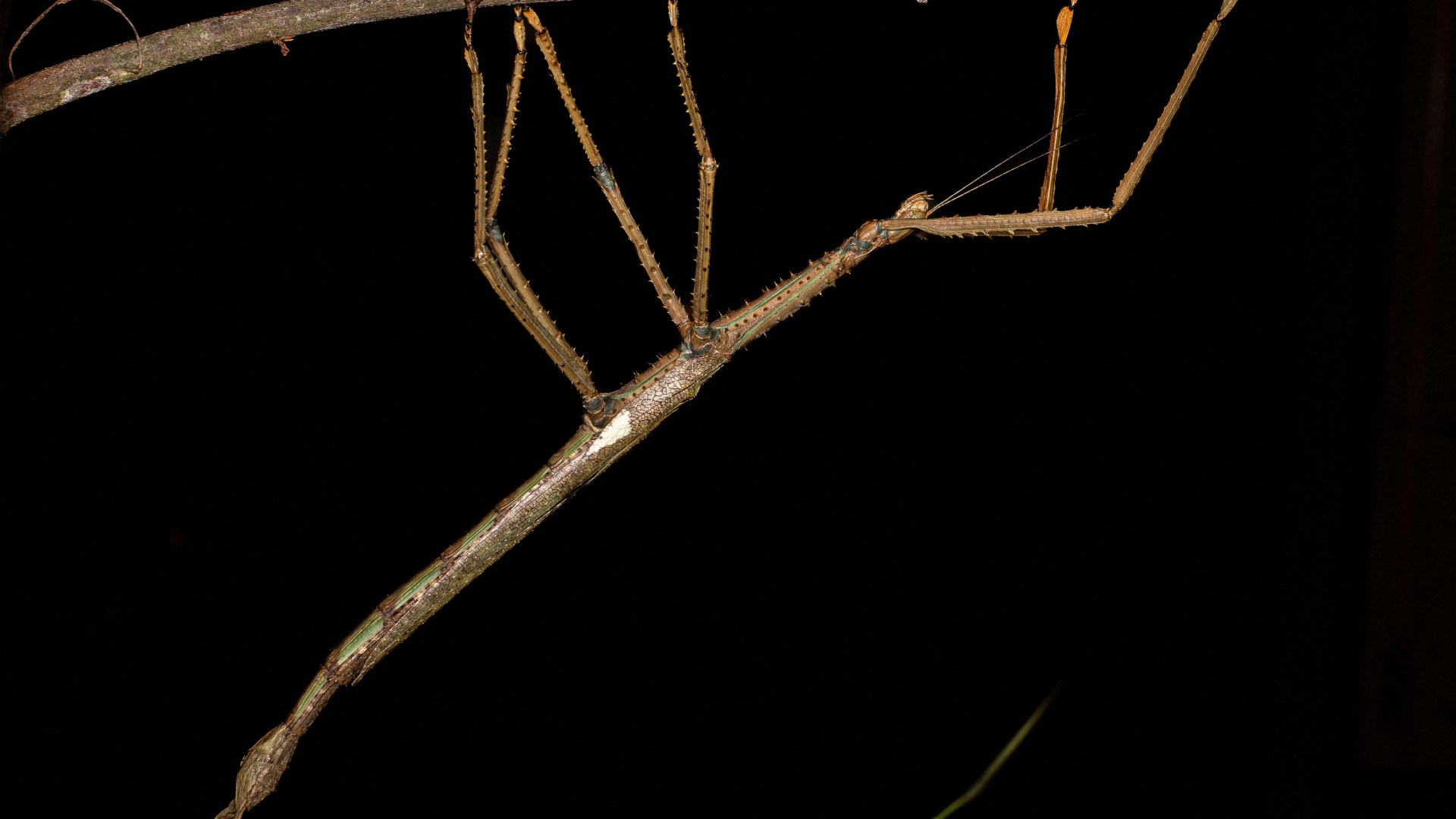Science
Giant Stick Insect Discovered in Australia Measures 40cm Long

A newly discovered species of stick insect in Australia has captured the attention of researchers and entomologists alike due to its remarkable size. Measuring approximately 40 cm (15.75 inches), the insect, identified as Acrophylla alta, is the heaviest recorded insect in the country, surpassing the previous titleholder, the giant wood moth, which weighs up to 30 g.
Researchers from James Cook University captured images of the insect in the remote Wet Tropics region of North Queensland. This area, characterized by its high-altitude trees and dense rainforest, has proven to be an elusive habitat for such creatures. According to Professor Angus Emmott, who played a key role in identifying this new species, the stick insect’s substantial size may be an evolutionary adaptation to its cool and moist environment.
Evolutionary Adaptations and Habitat
“Their body mass likely helps them survive the colder conditions, and that’s why they’ve developed into this large insect over millions of years,” Professor Emmott explained. The female specimens possess wings, yet their heavy bodies limit their ability to fly effectively. One female specimen weighed in at 44 g, which is just shy of the weight of a golf ball.
The discovery of Acrophylla alta highlights the unique biodiversity of Australia’s rainforests. Researchers believe that the insect’s habitat has contributed to its long-standing invisibility. “They live high up in the rainforest canopy, and accessing that is almost impossible,” Professor Emmott added. “You’ve got to wait until, for instance, a bird knocks one down or you get a big storm and they get knocked down. It’s very, very hard to find them in situ.”
Next Steps in Research
The next phase in the research involves locating a male specimen, which is crucial for confirming the species and understanding its reproductive biology. Male stick insects tend to be significantly smaller and possess distinct physical features. Professor Emmott noted that males of this species have sometimes been classified as belonging to a different genus altogether due to their differences in appearance.
“You really need to find the male copulating with the female,” he stated. “You know what it is then, and you collect the eggs and you can actually ascertain that they’re one of the same thing.” The eggs of stick insects are also vital for identification, as they are unique to each species.
Both the female specimen and another captured individual are now part of the collection at the Queensland Museum. The discovery of Acrophylla alta not only adds to the biodiversity of the region but also emphasizes the importance of ongoing research in understanding and preserving Australia’s unique fauna.
-

 Top Stories3 months ago
Top Stories3 months agoTributes Surge for 9-Year-Old Leon Briody After Cancer Battle
-

 Entertainment4 months ago
Entertainment4 months agoAimee Osbourne Joins Family for Emotional Tribute to Ozzy
-

 Politics4 months ago
Politics4 months agoDanny Healy-Rae Considers Complaint After Altercation with Garda
-

 Top Stories4 months ago
Top Stories4 months agoIreland Enjoys Summer Heat as Hurricane Erin Approaches Atlantic
-

 World5 months ago
World5 months agoHawaii Commemorates 80 Years Since Hiroshima Bombing with Ceremony
-

 Top Stories3 months ago
Top Stories3 months agoNewcastle West Woman Patricia Foley Found Safe After Urgent Search
-

 Top Stories5 months ago
Top Stories5 months agoFianna Fáil TDs Urgently Consider Maire Geoghegan-Quinn for Presidency
-

 World5 months ago
World5 months agoCouple Convicted of Murdering Two-Year-Old Grandson in Wales
-

 World5 months ago
World5 months agoGaza Aid Distribution Tragedy: 20 Killed Amid Ongoing Violence
-

 World5 months ago
World5 months agoAristocrat Constance Marten and Partner Convicted of Infant Murder
-

 Top Stories4 months ago
Top Stories4 months agoClimbing Errigal: A Must-Do Summer Adventure in Donegal
-

 Top Stories4 months ago
Top Stories4 months agoHike Donegal’s Errigal Mountain NOW for Unforgettable Summer Views









